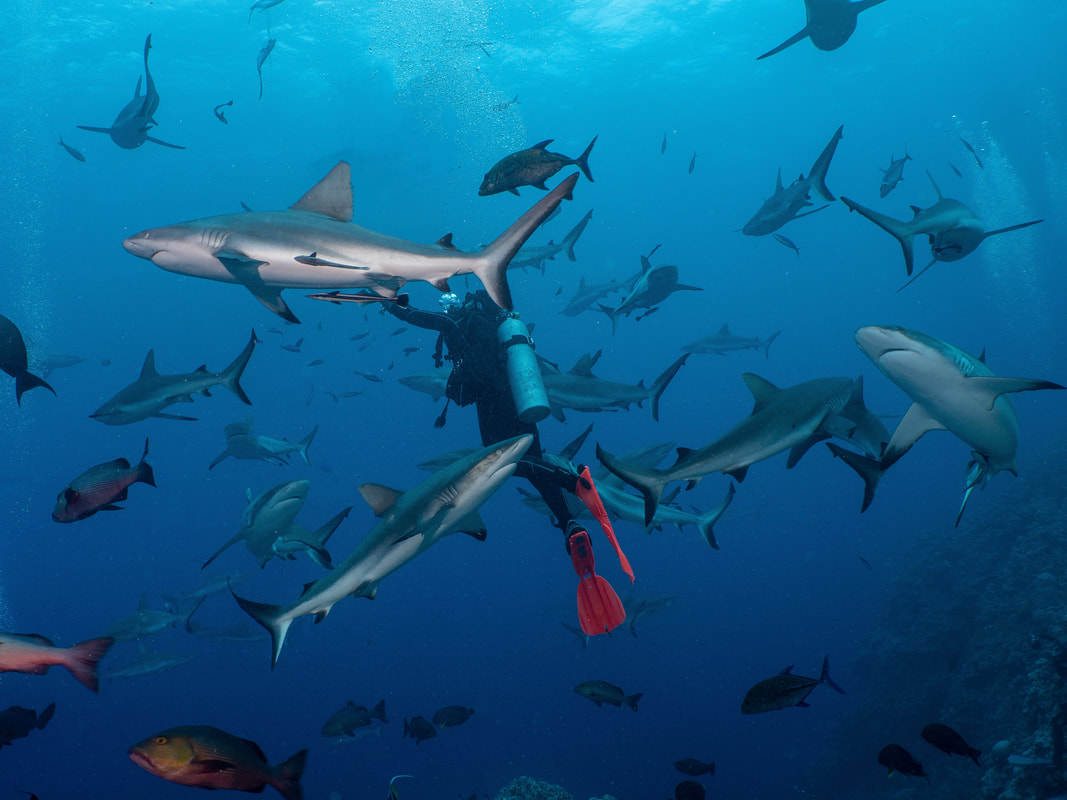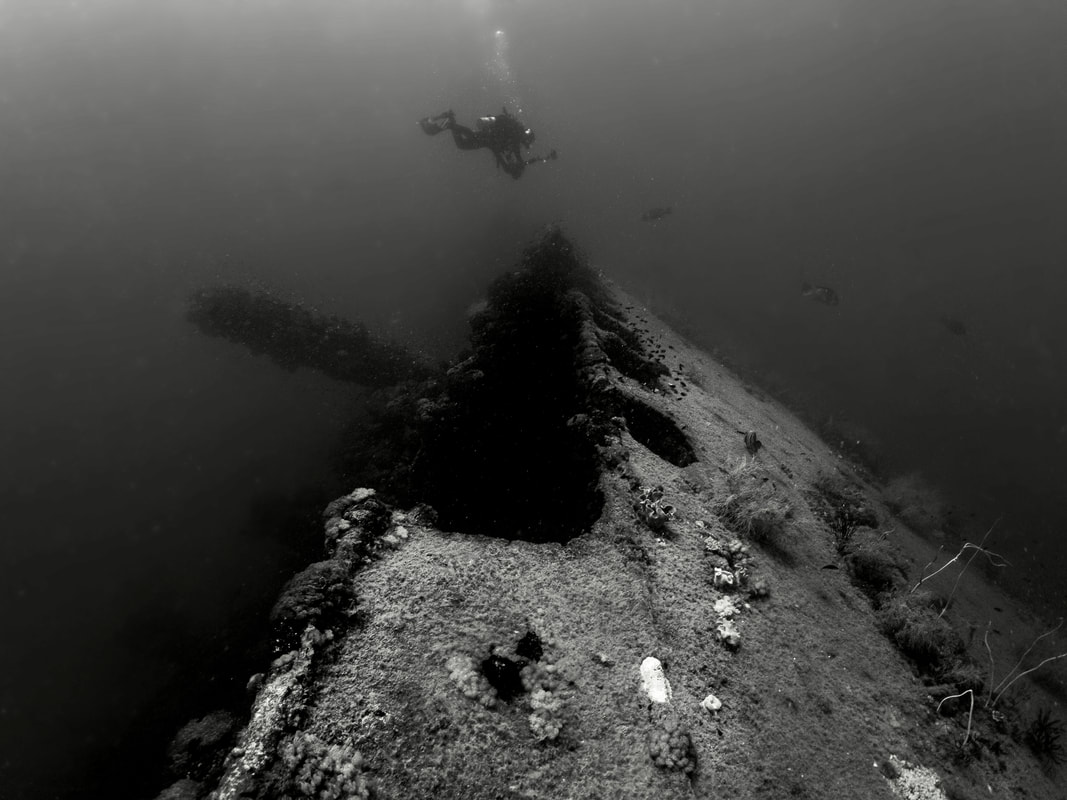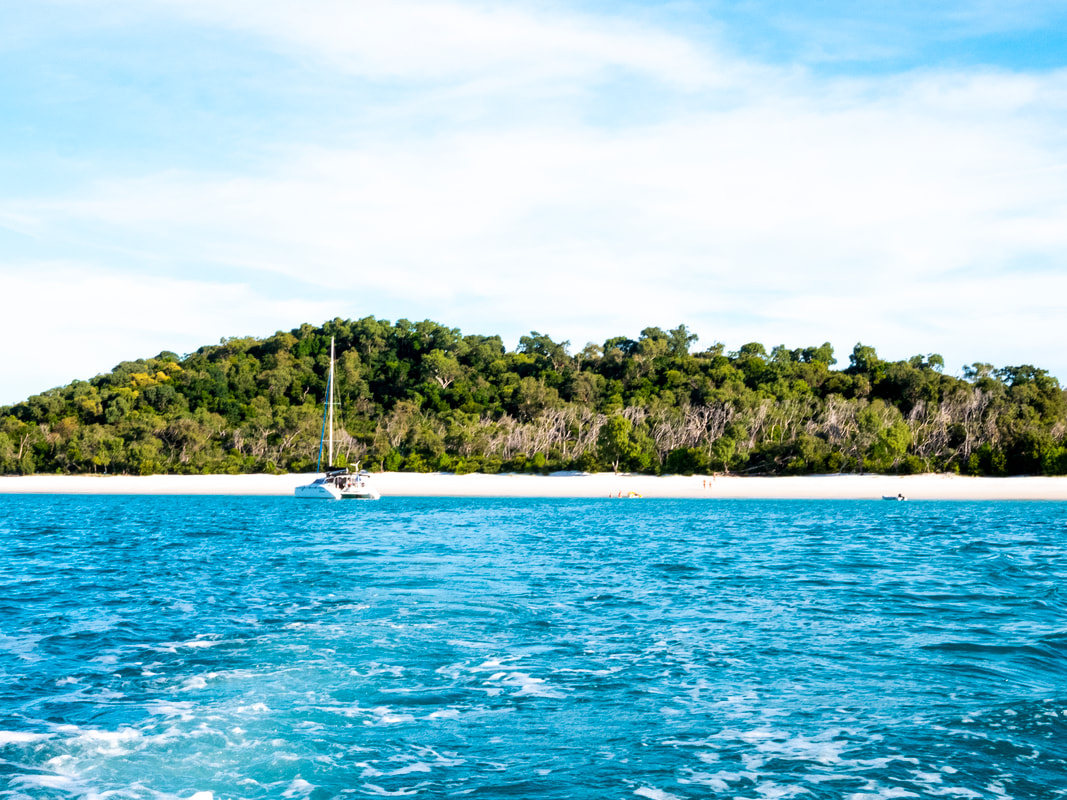|
We Aussie’s know that Queensland is not short on natural wonders, after all it’s here you’ll find two UNESCO World Heritage areas; the mind-blowing underwater universe of the Great Barrier Reef, and the staggering virgin mega-forest of the Wet Tropics World Heritage area, yet while we’re avid travelers often going to lengths to explore the far-flung corners of the earth, so many of us haven’t even scratched the surface of the amazing watery world we find on our own door step. Whether you’re watering yourself under a waterfall or taking a selfie with a shark, Queensland is definitely more than just sunshine and pineapples. So, if you’ve ever dreamed of diving deeper into the sunshine state, then this is what’s on show - our guess is that you’ll want to be front row. 1. Walk with Dinosaurs Where: Daintree Rainforest - Wet Tropics World Heritage area, Queensland Listed as “Vulnerable” on the IUCN Red List of Threatened Species, and endangered in Australia, this impressive flightless bird may as well have walked with the dinosaurs. Evolving from the Jurassic era 160 million years ago, the southern cassowary still roams the entire Wet Tropics World Heritage area, although it’s reported that only 1,500 remain. The Cassowary is extraordinary in many ways. It’s the males that hatch the eggs and raise their chicks, and as an important rainforest gardener, it spreads the seeds of up to 70 different rainforest tree species, many of which are so large that no other animal can swallow and disperse them. The work the cassowary does is essential for the forest’s ongoing survival. Seeing a cassowary in the wild means treading lightly, and requires lots of patience, and of course - luck! It’s also important to be ‘Cass – o - Wary’, as the only birds known to have killed humans, it’s important not to get too close. 2. Find Nemo Where: The Great Barrier Reef We all know the Great Barrier Reef, but how many of us have really seen it? This is the largest living organism on the planet, and it’s downright beautiful. Stretching for over 2,300 kilometres and visible from space, this is one incredible underwater universe. While the reef system itself is peppered with more than 900 islands and coral cays boasting white sandy beaches and the clinking sound of cocktail’s being made at the bar, it’s what lies beneath that’s really special. While there is no doubt, like many reefs the world over, the Great Barrier Reef is under climate pressure, the sheer fact it is so huge means it still harbours prolific life and colour. Here you’ll discover a kaleidoscope of spectacular hard and soft corals and a diverse array of mega and macro marine life. Overhangs and caves reveal: turtles, stonefish, and moray eels, and of course there’s plenty of places to find Nemo! The reef is accessible for aquaholics of all types, and there are numerous day-trips and longer excursions to choose from. Sail it, paddle it, sleep on it, dive it, or fly it – you choose. 3. Take a Shark Selfie Where: Osprey Reef, Coral Sea Ever wanted a selfie with a shark? or more to the point, lots of sharks? Well, it only takes a single fish head to stir the curiosity of the sharks at Osprey Reef. Located 350 kilometres offshore from Cairns, this wild and exceptionally remote wonderland is the most northerly of all reefs in the Coral Sea. The fact it sits atop an underwater mountain rising 2,000 metres vertically from the ocean floor means it’s a beacon for marine life in what is otherwise a vast, limitless ocean. On a single dive here, you will encounter: gray reef whalers, silvertip and whitetip reef sharks, all in large numbers, while in the cooler months encounters with scalloped hammerhead sharks are also common. Given its remote location, the reef is best accessed as part of a scuba diving liveaboard trip from Cairns with the fabulous Mike Ball Dive Expeditions. Oh, and if you don’t already have an underwater camera, well you’ll definitely want one for this most epic of all diving experiences. 4. Get Wet at Wallaman Falls Where: Girringun National Park - Wet Tropics World Heritage area. For sheer exhilaration, nothing quite beats hiking through virgin rainforest to swim at the base of a thundering waterfall. During Queensland’s Wet Season, the Wet Tropics World Heritage area boasts some of the most stunning waterfalls in Australia, and while there are countless waterfalls and incredible swimming holes to choose from, none quite beat this one. Located approximately three hours south of Cairns in Queensland’s Girringun National Park, Wallaman Falls is Australia’s longest single drop waterfall. Be sure to view it from the top and the bottom. The two-hour return hike to the bottom will reward you with an exhilarating spray, but don’t be tempted to swim at the base of this one—you’ll see why when you get here! Nothing quite beats seeing the falls from the sky, so why not also take a scenic helicopter ride. 5. Walk with a Shark Where: Heron Island - Southern Great Barrier Reef Marine Park That’s right, we said walk not swim! This tiny coral cay in the Southern Great Barrier Reef boasts a diverse array of unique fauna and marine animals, but none stranger than this one. This is the epaulette shark (Hemiscyllium ocellatum), or walking shark - a species of long tailed carpet shark found in shallow, tropical waters off Australia and New Guinea. Frequenting shallow water on coral reefs or in tidal pools, these shy little sharks have evolved to cope with oxygen depletion from being isolated in tidal pools by increasing the blood supply to their brain and shutting down non-essential neural functions. They can survive out of the water for over an hour without a problem! Rather than swim, epaulette sharks actually prefer to "walk" by wriggling their bodies and pushing with their pectoral fins. To see them here on Heron Island, all you’ll need is: the setting sun, low tide, some reef shoes, and good eyes. Just be careful to walk mindfully about the reef avoiding coral and other critters – you might be surprised at to what else you’ll find. 6. Get Shipwrecked Where: S.S Yongala - Alva Beach, Queensland Exploring the S.S. Yongala is a diving experience like no other. Sinking mysteriously in 1911, it’s older than the Titanic and therefore home to prolific megafauna that find sanctuary in its vast and cavernous structure. Believed to have sunk far offshore as she unknowingly steamed into a raging cyclone, the S.S. Yongala took the lives of a racehorse named Moonshine, a prize-winning bull, alongside 49 passengers and 73 crew. The only body ever found was that of the racehorse named Moonshine. It wasn’t until almost 50 years later that two local divers located the wreck and recovered the steel safe from the wreckage. The safe’s serial number was eventually traced back to Chubb Security in the UK, who confirmed it was installed in the purser’s cabin aboard the ship in 1903. Today, the Yongala is listed as an artificial reef and presents an ecosystem like nothing else in the Great Barrier Reef. Resting on its starboard side at a depth of 28 meters, the 109-metre - long ship attracts all the big stuff. Enormous hump-head wrasse, Queensland grouper and potato cod make the wreck their home alongside numerous species of schooling fish, olive sea-snakes, marbled rays, eagle rays, turtles and sharks. The wreck remains the resting place for the 122 passengers and crew, and a prize-winning bull, who tragically lost their lives. 7. Indulge in Rare and Ancient Art Where: Stanley Island At the tip of Cape Melville in Queensland’s far North you’ll find Stanley Island, home to the Yiithuwarra or “salt water” people and their mysterious cave art. While there are several mysterious rock art sites on the island, the best known is the Yintayin rock shelter, also known as the “Ship” rock shelter. It’s here, hidden beneath the island’s cliffs that you’ll find some of the earliest known indigenous depictions of European ships, illustrating European settlement and occupation in Australia. The rock art here is of international significance and viewing it is indeed a unique privilege, and an irreplaceable record of Aboriginal culture in Australia. Due to its remote location, Stanley Island is best accessed via cruise vessels and some scuba diving liveaboards that visit the Flinders Island Group and depart from the Cairns seaport. 8. Float your boat Where: Whitsunday Islands With 74 tropical islands just a hop, skip and a jump (55 kilometres) off the Queensland coast, these protected turquoise waters complete with secluded white sandy beaches and hidden bays in the Great Barrier Marine Park, are a sailing mecca. The best thing is that you don’t even need your own yacht to experience this watery wonderland, and better still - you don’t even have to know how to sail, because they’ll teach you. They call it ‘bareboating’, where you hire a yacht equipped with absolutely everything you need, get some quick training, fill the fridge with food, grab your best buddies and sail yourself at your own leisure. Wake to blue skies and endless sunshine. Swim, snorkel, sunbathe or spot humpback whales (in season). Watch the sun go down over turquoise seas, and watch it rise over your early morning coffee. And then there’s Whitehaven Beach! Nothing quite beats the freedom of being on the water, and the Whitsunday’s delivers it in spades. So are you ready? visit queensland.com.au
1 Comment
15/5/2024 02:39:19 pm
Nice for information
Reply
Leave a Reply. |
|









